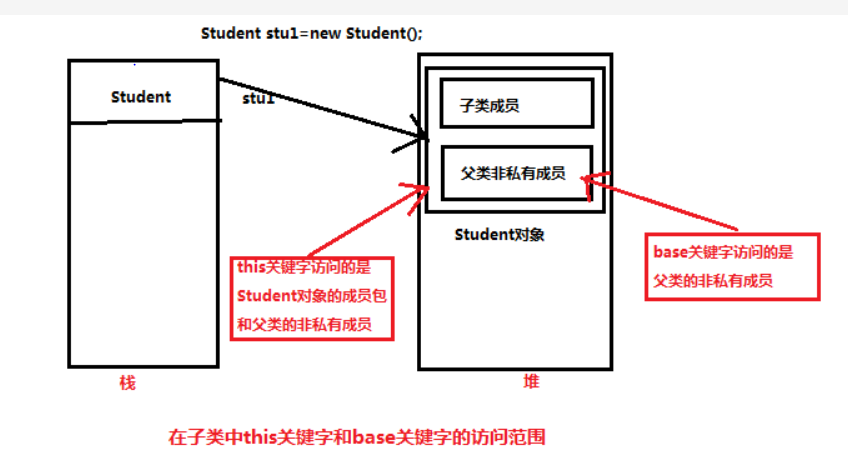操作符里的类型转换
一、隐式类型转换
- 不丢失精度的转换
- 子类向父类的转换
- 装箱
using system; namespace Conversion_Example { class Program { static void Main(string[] args) { Teacher t = new Teacher(); Human h = t ; //把T这个变量所存的地址赋给了H /*当你拿一个引用变量去访问它所引用着的实例的成员的时候,只能访问到变量的类型所具有的成员,而不是这个变量所引用的实例的类型。所以H这个变量只有eat和think,没有teach, h.teach根本不存在*/ } } class Animal { public void Eat() { console.writeline("Eating....."); } } class Huamn:Animal { public void Think() { console.writeline("Who i am....."); } } class Teacher:Human { public void Teach() { console.writeline("i teach programming...."); } } }
二、显式类型转换
- 有可能丢失精度的转换,即cast
- 拆箱
- 使用Convert类
- ToString方法与各类数据类型的Parse/TryParse方法
例子1:两个变量不兼容,使用Convert转移
double x = system.Convert.ToDouble(Text1);
double y = system.Convert.ToDouble(Text2);
double result = x+y;
this.Text3 = Convert.ToString(result);//或者result.ToString();
例子2:两种类型相兼容
int n = (int) 10.0;
自定义类型转换操作符
- 示例
using system; namespace Conversion_Example { class Program { static void Main(string[] args) { Stone stone = new Stone(); stone.age = 5000; Monkey wukongsun = (Monkey) stone; Console.Writeling(wukongsun.age); } } class Stone { public int age(); public static explicit operator Monkey(Stone stone) { Monkey m = new Monkey(); m.age = stone.age/500; return m; } } class Monkey { public int age; } }
三、自定义类型转换操作符
"is"、"as"、"?:"、lambda 、this、base
1、lambda
1、匿名方法2、Inline方法
例子:
Func<int,int,int> func=new Func<int,int,int>( (int a ,int b) => {return a+b ;} )
Notice:
*(int a ,int b)匿名方法里接受两个参数
*=>把上面的两个参数代入到
*{return a+b ;} 函数体
* (int a ,int b) => {return a+b ;}为lambda
*(int a ,int b)匿名方法里接受两个参数
*=>把上面的两个参数代入到
*{return a+b ;} 函数体
* (int a ,int b) => {return a+b ;}为lambda
2、this&base
第一个用处:
1 class Student : Person 2 { 3 private string strClass; 4 5 private string strAddress; 6 7 8 public void Address(string cla, string adre) 9 { 10 //这里的this关键字调用了子类的成员和父类的非似有成员 11 this.strClass = "三零八班"; 12 this.strAddress = "北京"; 13 this.strName = "李雷"; 14 15 //这里base关键字调用了是父类的非似有成员 16 base.strName = "李雷"; 17 18 Console.WriteLine("我是{0}年纪,来自{1}", cla, adre); 19 } 20 public void Sing() 21 { 22 this.strClass = ""; 23 Console.WriteLine("我可以唱歌!"); 24 } 25 }
所以在子类中this关键字和base关键字的访问范围的示意图如下:
this:可以点出当前类可以用的所有成员,包括继承下来的成员。
base:只能点出父类的成员。
this&base

第二个用处:
public class student
{
public student(int ID,string Name)
{
this.id =ID;
this.name =Name;
}
public student(int ID,string Name ,sex Sex) :this (ID,Name)
{
this.sex =Sex;
}
Public int id;
Public string name;
Public sex sex;
}
在调用下面的构造函数的时候,会先调用上面的构造函数。调用本类的其他构造函数。